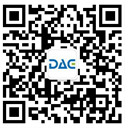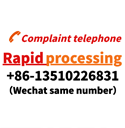The new EU machinery Regulation was published in the EU Official Bulletin (OJ) on 29 June 2023. The first Errata of Regulation (EU) 2023/1230 of 4 July 2023, which replaces the current Machinery Directive 2006/42/EC, deals with new entry into force dates, deadlines, etc. This new regulation will have a 42-month transition period, which will be implemented on July 19, 2023 and enforced on January 20, 2027.
The new regulation updates the existing EU Machinery Directive 2006/42/EC and will further harmonize the basic health and safety requirements for machinery products in the EU, promote the free movement of machinery on the EU market and provide a higher level of safety for workers and the public. The new regulation will establish a legal framework for the placing of safety machinery and equipment on the EU market and cover new risks associated with emerging technologies.
The areas covered by the requirements in the new regulations include::
Network security of safety control systems and software related to mechanical compliance assessment;
Use of artificial intelligence (AI) in security functions;
Automatic and remote mobile machinery;
collaborative robots (cobots).
Substantive amendment
The new regulations introduce the concept of "substantial modifications", which are repair and maintenance operations affecting the compliance of machinery or related products with relevant essential health and safety requirements.
Major changes in the new Machinery regulation compared to the original Machinery Directive:
▶Regulations, not directives;
▶Increased legal certainty, uniform application in each Member State (e.g. substantive amendments);
▶Order of changes to terms and annexes;
▶Integration of AI-related safety function provisions;
▶Integrate cybersecurity related regulations and compliance related software and data for security control systems;
▶Digitization of usage instructions, assembly instructions and EU compliance/company statements;
▶A common specification as an alternative when there is no suitable uniform standard;
▶Simplified safeguard procedures, aligned with other legislation - self-engaging behaviour using machine learning methods;
▶"Substantial modification" includes;
▶Obligations of economic operators (Chapter II) :
There are the following types of economic operators: manufacturers, importers, distributors and natural or legal persons who make substantial modifications to machinery.





 Location:
Location:









